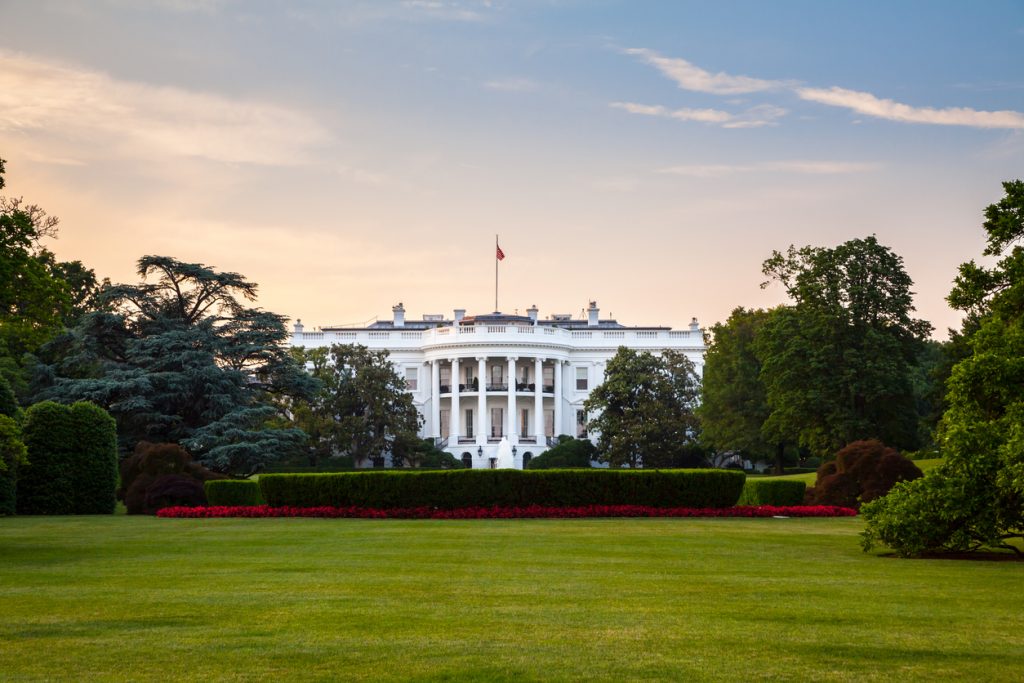President Trump’s recent executive order focuses on one unanswered question: Can the U.S. remain the leader in artificial intelligence?
America’s status as the world’s AI authority seems increasingly uncertain as China races to take that distinction for itself. Beijing is heavily investing in AI, raising doubts about which nation is the emerging technology’s true frontrunner.
Trump’s executive order – which he signed on Feb. 11 – describes America’s AI leadership as a critical goal for the entire federal government.
“Continued American leadership in AI is of paramount importance to maintaining the economic and national security of the United States and to shaping the global evolution of AI in a manner consistent with our Nation’s values, policies, and priorities,” according to the order.
The executive order then instructs all federal agencies to prioritize and allocate funding for AI programs that serve their individual missions.
“Maintaining American leadership in AI requires a concerted effort to promote advancements in technology and innovation, while protecting American technology, economic and national security, civil liberties, privacy, and American values and enhancing international and industry collaboration with foreign partners and allies,” the document states.
Recognizing these goals, Trump’s order establishes the American AI Initiative, listing five principles that will guide the new program:
- Driving AI breakthroughs in the U.S. across the federal government, academia and industry to promote economic competitiveness, national security and scientific discovery.
- Developing technical standards and reducing barriers to the safe testing and deployment of AI for today’s industries and future, AI-related ones.
- Training current and future U.S. workers so that they have the skills to develop and apply AI for both the current economy and tomorrow’s version.
- Fostering public trust and confidence in AI so that the technology is used to protect civil liberties, privacy and American values.
- Creating a global environment that supports American AI innovation, research and open markets while maintaining the nation’s edge on the technology. The U.S. must additionally protect its critical AI technologies from adversarial nations and strategic competitors.
The initiative then details six strategic objectives that every federal agency must pursue to promote and protect American AI advancements:
- Promoting sustained AI research and development investments with industry, academia, international partners and allies and other non-federal entities to generate breakthroughs in the technology. These innovations must then be rapidly implemented for economic and national security gains.
- Enhancing access to federal data, models and computing research without sacrificing any confidentiality protections, privacy, safety and security protections.
- Reducing barriers to AI use without hurting America’s technological, economic and national security, civil liberties, privacy and values.
- Ensuring that technical standards minimize the vulnerability to attacks from malicious actors while reflecting federal priorities in systems using AI.
- Training the next generation of American AI researchers and users through apprenticeships, skills programs and education in science, technology, engineering and mathematics (STEM) with an emphasis on computer science.
- Develop and implement an action plan aimed at shielding America’s AI advantage and technology critical to U.S. economic and national security against foreign adversaries and strategic competitors.
The Hill reported on Feb. 11 that the order comes two years after China announced a detailed strategy for becoming the global leader in AI. Experts told The Hill, however, that Trump’s order does not specify any tangible goals for American AI or a timeline for accomplishing them. The order also doesn’t instruct Congress to appropriate new funding for AI, they added, instead pressuring federal agencies to use more of their money and resources on the technology.
The Hill additionally noted that some agencies are already making significant inroads on AI, citing the Defense Department (DoD) and the Transportation Department (DOT) as examples.
DoD, meanwhile, also released the agency’s individual AI strategy on Feb. 11 alongside the Trump administration’s version. Agency CIO Dana Deasy said during a media roundtable that day that agility and speed are the central focus of DoD’s AI efforts.
“The success of our AI initiatives will rely upon robust relationships with internal and external partners,” he said. “Interagency, industry, our allies and the academic community will all play a vital role in executing our AI strategy.”
Deasy added that DoD would utilize an enterprise cloud foundation for enabling AI and achieving the agency’s objectives. DoD also released a cloud strategy this month that focuses on the U.S. military having “information superiority” over its adversaries.
The strategy envisions cloud as enabling AI, data analytics, automation, machine learning and other tools for DoD.
AI’s ability to emulate human intelligence has made it one of the most desirable emerging technologies in both the public and private sectors. Unfortunately, experts are voicing concern over AI’s potential to disrupt human workforces and impact individual freedom, privacy and safety.
The addition of national governments into the mix only complicates the debate over AI, and it remains unclear which – if any – country will become the technology’s driving force in the coming years.
